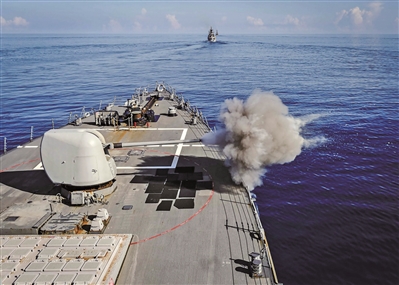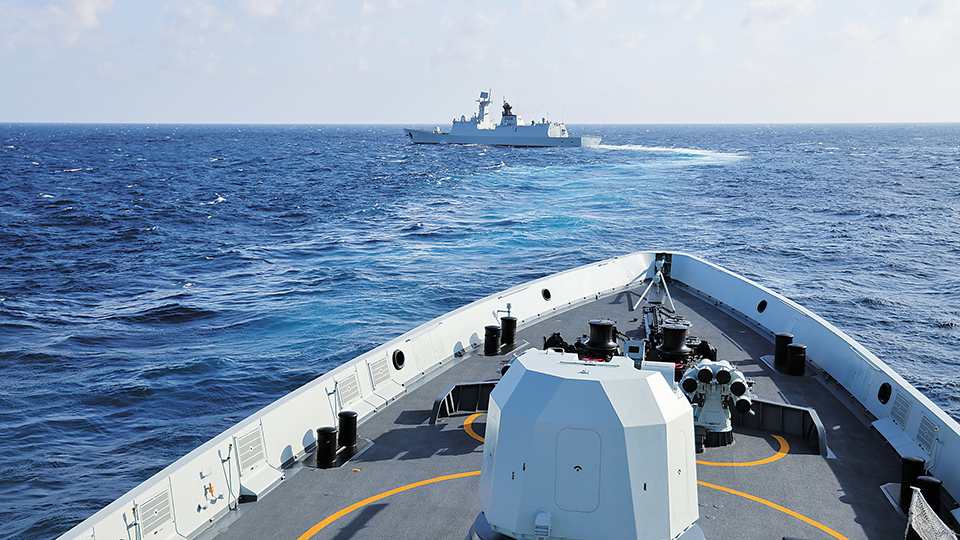
By Zhang Chi
Chief of Naval Operations Adm. Michael Gilday unveiled a new navigation plan at the Surface Naval Association 2021 symposium on January 11, 2021. This new roadmap for the US Navy outlined the service’s key areas of development in the next decade and emphasized the leading role it’s going to play in maritime control.
According to the plan, the US will continue to dispatch naval forces around the world and maintain military superiority on the sea over countries like Russia, said American media.
The plan listed the steps that the US Navy will take in the next decade to develop its maritime operational forces, featuring three major characteristics.
First, the plan highlights strategic threats. Gilday held that as a maritime country, the US has become more reliant on trade, energy, and communication systems that come via the sea. And the US Navy's top officer claimed that current maritime order and US collective security are "under threat,” and stressed the US Navy must take potent steps in response to these strategic threats.
Second, the plan stresses cost-effectiveness. According to Gilday, having had a series of failed projects, the US Navy will re-evaluate the building of various vessels, adjust the ship-building plan based on realities, and introduce new technologies in due time.
Third, the plan emphasizes unmanned platforms. The US Navy's top officer said the new navigation plan focuses on air, surface, and underwater platforms and that 1/4 of their naval fleets will comprise unmanned platforms in the future 10-15 years. Unmanned platforms will give the US Navy advantages in intelligence, surveillance, and reconnaissance, strengthen its assault capability, and enable it to fight in heated competition areas, said Gilday, noting that unmanned ships also offer a solution to expanding the naval fleets.
Analysts pointed out that as the Trump administration is counting its days at the White House, the US Navy’s release of the new plan, plus the previous strategic report titled Advantage at Sea, Prevailing with Integrated All-Domain Naval Power, is aimed to set obstacles to the incoming Biden administration and push shackles on the decision-making power over naval buildup.
Going forward, the US Navy may further adjust its fleet scale and structure based on the service's latest plan and the earlier report to enhance its overall operational capacity and readiness. In the meantime, it may reinforce military deployments in key regions such as the Asia Pacific, Europe and the Middle East to form a strategic environment and military landscape in its favor.
What’s worth vigilance is that in implementing its plan, the US military may drag potential adversaries into the trap of a protracted arms race, who might end up straying off the strategic path, victimized by “strategic deception”.
However, it is generally believed that the above-mentioned plans are unlikely to be effectively implemented, especially in such unusual times riddled with contradicting official views and complicated interests of various military services, and featured by the declining shipbuilding industry and the forthcoming shift of administrations. As the COVID-19 pandemic is still wreaking havoc across the US, if the US Navy is bent on enforcing those plans, it may put more pressure on its officers and sailors both regarding readiness and regular work, and that may as well exert opposite effects on the navy’s combat capabilities.

















